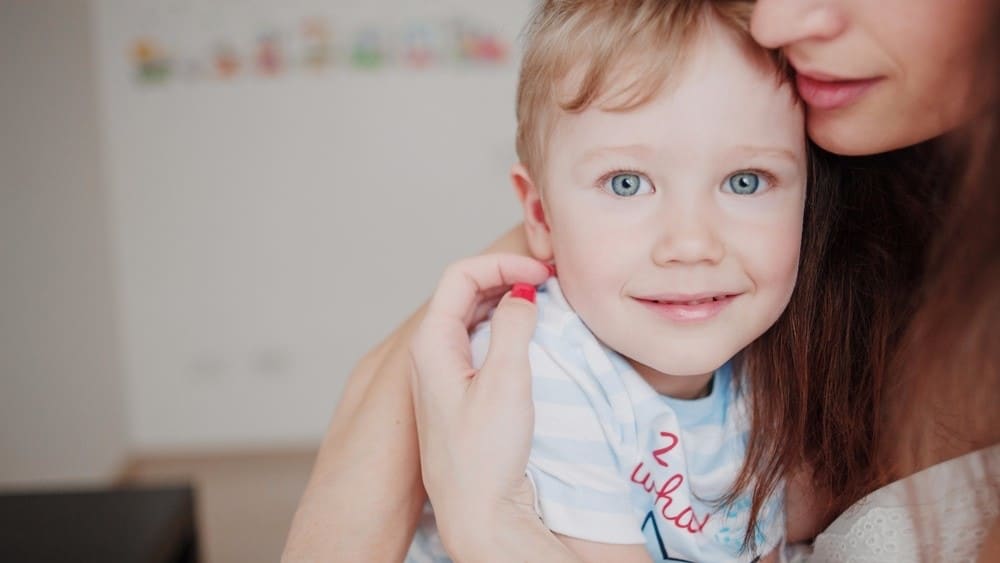How to help your stressed-out child feel calm again

Teach your kids to choose their own ending.
Childhood stress might not seem like such a big deal, but it is very real and can cause significant emotional and physical problems.
Left unchecked, childhood stress can result in chronic illness, headaches (including migraines), sleep disturbance, digestive problems, high blood pressure and back and neck pain. It can also exacerbate symptoms of asthma, allergies and diabetes.
On the emotional side it can cause anxiety, depression, difficulty socializing and poor school performance. In short—stress can negatively impact the day-to-day lives of our children.
There is good news for parents of stressed out little ones, though. When childhood stress is tackled head on, kids can learn to cope and work through it.
Try these stress reduction tips at home to help your little one feel calm again:
1. Use body mapping.
Most kids struggle to understand the mind-body connection. They don’t, for example, know that neck pain is a sign of stress or anxiety. They don’t understand that a stomachache the morning of a big test might very well be connected to the feelings associated with taking the test, or that a headache after a tough day at school isn’t just a cold.
Body mapping is a great exercise to help kids understand how their bodies feel when they’re under stress. Have your child draw an outline of a body. Dress and decorate the body to make it more fun. Talk about how our bodies can feel when we are stressed or worried.
You might mention a racing heart when feeling anxious or a headache when overwhelmed. Cue your child to think about how his body responds to stress (tight muscles, clenched jaw, sore tummy) and color those areas red on the body map.
Once your child completes the map, talk about common triggers (friendship trouble, school, too much homework, etc.) and how to work through them.
2. Practice guided imagery.
Deep breathing is a great tool for reducing stress, but it can be difficult for kids to practice independently. More often than not, they breathe too quickly and worsen their stress symptoms.
Adding guided imagery to the mix helps kids calm down while envisioning a relaxing scene or story. Note: It’s important to practice stress reduction techniques when kids are calm so that they can utilize them when they are upset later on.
Have your child get comfortable in a relaxing place (the child’s bedroom is generally a good place). Ask your child to name a relaxing destination (the beach, a forest, etc.) Cue your child to use relaxation breathing (in for four, hold for three, out for four) while you describe a journey to the relaxing destination. Practice daily for 5-7 minutes.
3. Revisit the schedule.
Sometimes we get stuck on the treadmill when it comes to parenting. We keep running and doing because it seems like that makes kids happy. It doesn’t. Kids might not be able to verbalize feeling overwhelmed by constant activity, but everyone needs downtime. And all kids need time to play.
Make a stress list, including that busy schedule, and look for areas where you can cut back and make time for family and play.
4. Choose your own ending.
Kids tend to experience symptoms of stress when they feel out of control—when they feel helpless. When it feels like the world is against them, kids get stuck in a rut and develop negative core beliefs (i.e. “I can’t do this,” or “I am powerless.”). Taking control of stress is a great first step toward reducing it.
Teach your kids to choose their own ending. Have your child describe a stressful situation, including how it ended (“someone was mean and I cried”). Help your child brainstorm alternate endings to the story. Finally, have your child retell the story with a new ending and talk about how that might feel.
Most kids experience ups and downs and varying degrees of stress along the way. Teaching them how to cope with stress empowers them to work through the hard stuff in pursuit of happiness.
For more stress reduction techniques and strategies to empower children to live happy lives, check out Katie’s new book, The Happy Kid Handbook: How to Raise Joyful Children in a Stressful World.
Originally published by Katie Hurley on The Huffington Post.


































